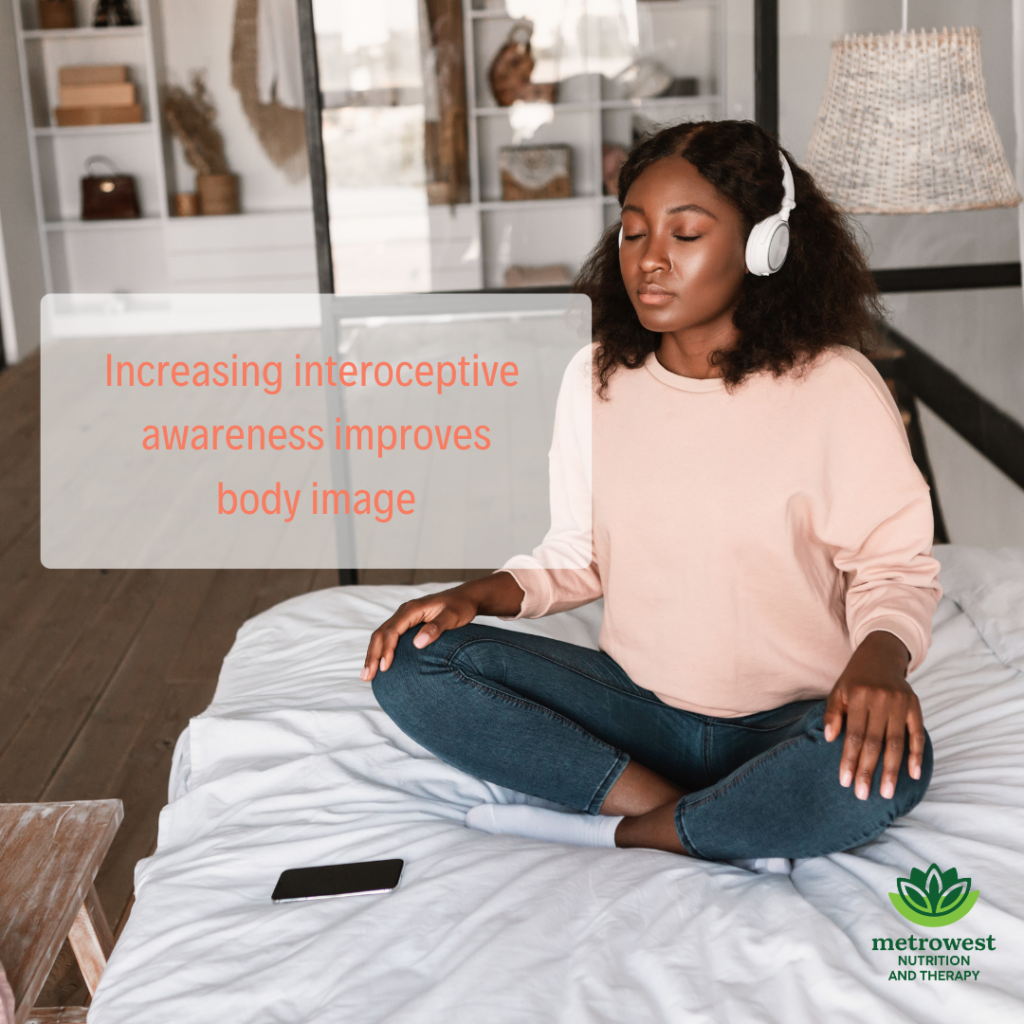
Interoceptive Awareness and Body Image
Interoceptive Awareness and Body Image
What is Interoceptive Awareness?
Despite how it seems, we actually can influence where our mind goes. Mindfulness and meditation help us cultivate awareness of our internal landscape. When we draw more attention inward, we develop our interoceptive awareness. Interoceptive awareness (IA) is the subjective experience of internal bodily cues like temperature, hunger, heart rate, physical sensations and breath.
Individuals with eating disorders tend to have decreased IA due to prolonged periods ignoring cues (i.e. hunger). The good news is that it can be restored. How? Through intentional focus on the inner experiences of your body and then responding appropriately (i.e. eating in response to hunger).
It’s important to note here that connecting to these experiences can be very difficult, unsafe even, particularly for individuals who have experienced trauma. That said, there is a way to create safety in the body over time. Gradual, incremental exposure over time in a safe environment (i.e. your therapist’s office or a group) is one way to cultivate this safety and eventually be able to use your own body as a resource in your recovery.
How does interoceptive awareness relate to body image?
A research study by Jennifer Todd and colleagues in Cambridge, UK in 2019 looked at the relationship between interoception and body image. The study included 646 adults. They found there was a significant predictive relationship between interoceptive awareness (MAIA) and all five measurements of body image (Body Appreciation Scale, Body Pride using BASES, Functionality Appreciation, and two subscales from the MBSRQ-AS). Furthermore, they found that after accounting for sex, BMI and age, interoceptive awareness accounted for 44% of the variance in body appreciation (BAS-2), 26.9% for functional appreciation (FAS), and 23% for body pride.
“[The authors] demonstrated that distinct dimensions of IA, such as the way in which interoceptive signals are appraised and and regulated, have unique relationships with facets of body image….. the extent to which interoceptive signals are regarded as “safe” and “trustworthy” emerged as the strongest, most consistent predictor for all of the positive body image indices (functionality appreciation and pride) and overweight preoccupation.”
What does this mean?
It appears that as individuals develop greater connection to their internal cues (i.e. become more embodied), overall body image improves. An interesting hypothesis made by the authors is that this is attributed to the concept competition of cues. The authors state “attentional antagonism between internal and external stimuli, such that attention paid to internal stimuli will reduce attentional resources available for external and vice versa”. Meaning, as we draw our focus inward, we naturally decrease our focus on the external appearance of our body and/or scan the outer world for information about our body. Likewise, the more we focus our attention outwards, the less mental resources are available to navigate our inner world. Fascinating right?
Intentionally drawing our focus inward helps with body image.
Increasing interoceptive awareness is a foundation of our Yoga and Body Image group. We use of yoga and mindfulness activities to help increase IA. This is combined with the cognitive dissonance framework of the Body Project curriculum which addresses mental constructs that have been internalized through our personal experiences, media and culture.
We have 3 spots left in our group for adult women starting in October. The group will be led by myself and Juliana Sampaio, both Body Project facilitators. The first half of the group is spent on yoga and mindfulness and the second half is spent on activities pulled directly from the Body Project.



